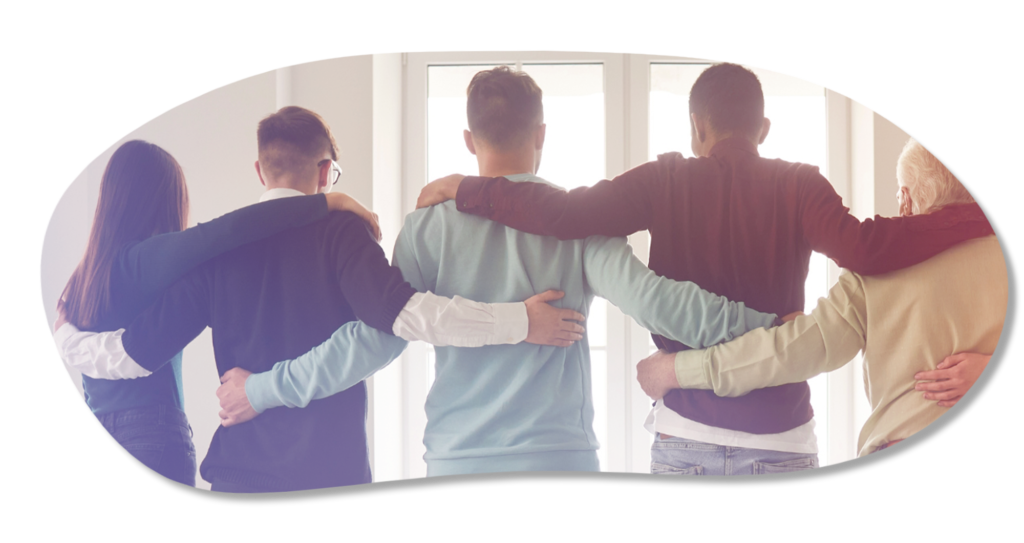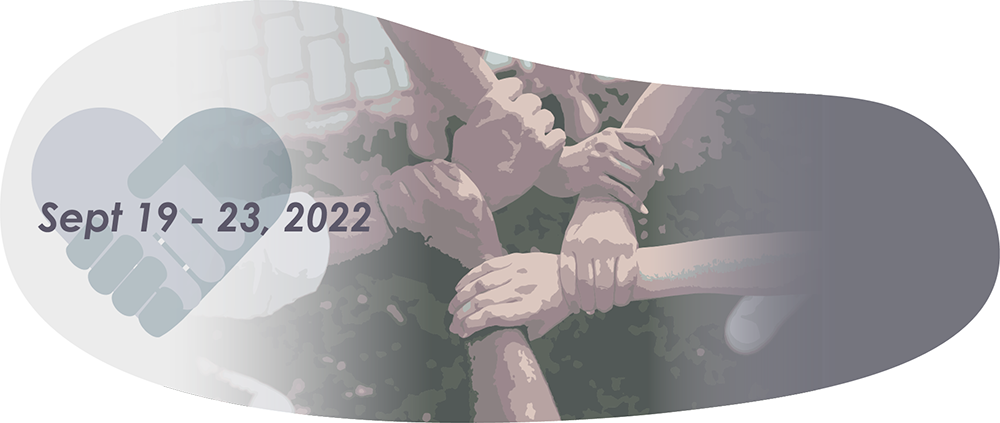In our busy daily lives, it’s easy to neglect ourselves. We often prioritize our physical well-being, career goals, and external appearances, but what about our emotional and psychological health? Understanding and healing your inner self is a journey that leads to self-discovery, personal growth, and overall well-being. Just as we tend to physical wounds, our emotional wounds also deserve attention and care.
The first step towards healing your inner self is acknowledging your emotions. Give yourself permission to feel without judgment and understand that your emotions are valid and serve as signals from within. Check out our blog post 5 Exercises for Checking-in and Slowing Down for some tips to get in touch with yourself and your healing journey.
Reflect on your past experiences and relationships that may have caused emotional wounds. It’s essential to identify these triggers to understand their impact on your present emotions and behaviours.
Treat yourself with the same kindness and understanding that you would offer a dear friend. Self-love involves being gentle with yourself, especially during times of emotional distress. Check out our self care healing room for some ideas to get you started.
Mindfulness involves being fully present in the moment, observing your thoughts and feelings without judgment. This practice can help you gain clarity about your emotions and promote a sense of calm.


Understanding and healing your inner self is a journey that requires patience, self-compassion, and a willingness to confront past wounds. By acknowledging your emotions, practicing self-care, and seeking professional guidance when needed, you can embark on a path of self-discovery and healing. Remember, the relationship you have with yourself sets the tone for all other relationships in your life.
Toxic relationships are like quicksand, easy to fall into, but challenging to escape. They come in many different forms, such as romantic relationships, friendships, family bonds or even professional connections. We will dive into the damaging effects, recognizing the signs and red flags to watch out for, and the importance of setting boundaries and seeking support. Keep reading to unmask the realities of toxic relationships.
One of the most daunting aspects of toxic relationships is that they can be subtle at first. The beginning of a relationship might appear normal, even promising, but over time, the toxic relationship reveals its insidious nature. Common signs of a toxic relationship include:
Check our our blog post for more signs of a sexually abusive relationship

Toxic relationships often follow a cyclical pattern, making it even more challenging for the victim to break free. The cycle usually involves four phases:
Unfortunately, this cycle tends to repeat itself over and over again, until it is broken by one person leaving.
Escaping a toxic relationship is a daunting journey, but essential for one’s emotional and mental well-being. Acknowledging the toxicity is the first step towards liberation. Here are some crucial actions to take:

Toxic relationships can consume us, slowly eroding our self-worth and happiness. Recognizing the signs, understanding the cyclical nature of toxicity, and taking action to break free are vital steps towards healing and growth. Remember, you deserve love, respect, and happiness, and breaking free from toxic relationships will allow you to reclaim your life and rediscover your true self.
If you ever need any resources to contact for help if you are experiencing a toxic relationship, please follow the following links:
Congratulations on embarking on an exciting new chapter of your life! Orientation Week is an incredible opportunity to kickstart your Post-Secondary journey. However, this action-packed week can also be overwhelming. Fear not, Vesta’s survival guide for O-Week has tips and tricks to help you make the most of it. In this comprehensive guide, we’ll equip you with valuable tips and advice to ensure a smooth transition into life on campus. Get ready to navigate through the festivities, stay organized, pack essentials, seize freebies, get involved, seek support, and prioritize self-care. Let’s make this Orientation Week an unforgettable experience! Keep reading to learn how to survive O-Week!
Before the festivities kick off, take some time to research and familiarize yourself with the schedule, venues, and activities planned for Orientation Week. Create a personalized timetable to keep track of events, workshops, and campus tours you’d like to attend. Having a clear plan will help you stay organized and avoid missing out on any key activities. Please allow yourself “ME” time as well. Orientation week can get a little time consuming, so allow yourself to have time for yourself to recuperate. Check out our blog post for some strategies for checking in with yourself and slowing down.
To ensure you’re well-prepared, pack a bag with essentials such as a refillable water bottle, snacks, comfortable walking shoes, a campus map, a notebook, pens, and any other items that might come in handy during the week. Don’t forget to check the weather forecast and pack appropriate clothing for all types of conditions. Head over to the following website to find out a sample list of what to bring to University/College
Make sure to take advantage of all the freebies! There will be a frosh kit given out that usually includes a water bottle, shirt and other school supplies. Special discounts and promotions will be offered on campus to make the transition easier. Check out the campus store to see any special deals for school merchandise and textbooks.
Orientation Week is all about getting involved and immersing yourself in the vibrant campus community. Participate in icebreaker activities, join interest-based clubs or organizations, and attend social events. It’s a fantastic way to meet new people, build connections, and find your niche on campus. Remember, everyone is in the same boat, so don’t be afraid to strike up conversations and introduce yourself. Making friends early on will allow the transition to the university lifestyle much better!
Starting at University can be overwhelming, and it’s okay to feel a bit lost at times. Don’t hesitate to reach out for support, we are here for you. Take advantage of the resources available to you, such as orientation leaders, campus staff, and student services. Vesta has resources for any help you might need, head over to our website to check them out. Remember, seeking help is a sign of strength, not weakness. If you ever need to take a mental break, head over to our mental health resources on our website.

Orientation Week is a unique opportunity to create lasting memories and embrace the beginning of your University life. Stay positive, approach each activity with enthusiasm, and be open to new experiences. After all, this is your chance to make lifelong friends and lay the foundation for an amazing University experience.
Unfortunately, the culture surrounding Orientation Week at university can sometimes lead to unsafe situations. It is disheartening to acknowledge that O-Week can foster an environment where toxic masculinity thrives. This is evident in the unhealthy competition among men to outdo each other in terms of their number of sexual partners, as well as the pressure to consume excessive amounts of alcohol.
While it is important to emphasize that victims of sexual violence are never at fault, it is still valuable to provide some general tips for ensuring safety during O-Week.
You’ve got this! Vesta’s survival guide for O-Week can help you make the most of Orientation Week. And if you need a little extra support, header over to our website for some helpful resources.
We celebrate The 2SLGBTQIA+ community’s varied identities during Pride Month! Pride encourages people to be proud of who they are, embrace their genuine selves, and openly express their gender and sexual orientations. It’s a time to emphasize the many ways that 2SLGBTQIA+ identities interact with other identities, such as race, ethnicity, religion, and disability. Pride Month encourages a greater understanding and acceptance of all 2SLGBTQIA+ people, by recognizing and affirming these intersections.

Pride Month is a time to celebrate, but also to advocate for causes and spread awareness. It gives 2SLGBTQIA+ organizations, allies, and activists a chance to unite and call for justice, equality, and an end to prejudice. The voices of the community are greatly boosted by the colourful demonstrations of solidarity and empowerment that take place during pride parades and marches. With the aid of these activities, spaces are created where 2SLGBTQIA+ people can feel seen, heard, and supported.
Pride Month promotes educational programs that disprove stereotypes and promote conversation about 2SLGBTQIA+ rights, experiences, and history. Workshops, panels, and debates are frequently held by companies, schools, and communities to promote a better knowledge of the difficulties the community faces. By reducing prejudice and discrimination, this raised awareness promotes an inclusive society. Head over to Social and Emotional Wellness Initiative, to access resources to enhance your knowledge on Pride Month.
Think about contributing money to charity or 2SLGBTQIA+ organizations. Your contributions can help fund crucial projects, programmes, and services that advance equality, offer resources, and assist 2SLGBTQIA+ people in need.

The foundation of wholesome relationships and sexual assault prevention is consent. In order to give consent, all parties must be enthusiastically agreeing to what’s going on. Learn about consent, then raise awareness of it. It’s important to keep in mind that permission should be freely given, reversible, informed, enthusiastic, and specified (F.R.I.E.S.). Share this information with others, dispel false notions, and promote candid conversations.
The prevention of sexual assault depends heavily on comprehensive sex education. Promote inclusive, age-appropriate sex education in communities and schools. Consent, limits, healthy relationships, communication, and identifying warning signs of abuse should all be covered. By educating people, we enable them to make wise decisions and promote polite interactions.
The ability of bystanders to intervene to stop sexual assault is a strong tool. Encourage everyone to become involved bystanders who spot dangerous situations and step in to stop them. Learn how to safely intervene, whether it involves providing a diversion, asking for assistance, or dealing with the issue head-on. By confronting improper conduct, we make public areas safer and demonstrate support for prospective victims.
Sexual assault is made acceptable by rape culture, which promotes negative attitudes and ideas. We need to aggressively oppose it and take it apart. Analyze your own thoughts and actions first. Avoid victim-blaming and talking about people as objects or something to be trivialized. Promote material that shows consent and healthy relationships. Talk about the fallacies surrounding rape and encourage a respectful, compassionate, and accountable society.
The healing and empowerment of sexual assault survivors depends on our support. Believe survivors and provide them a place to talk about their experiences that is free from criticism. Encourage them to contact support groups and seek expert assistance. Be a kind and patient listener while honouring their choices and boundaries. We can build a network of help that promotes recovery and resiliency together.
It is not only the duty of women to prevent sexual assault; men and boys must also actively participate as allies. Encourage males to oppose sexist behaviour, bad gender stereotypes, and toxic masculinity. Encourage positive male role models who place an emphasis on empathy, consent, and polite interactions. Together, we can remove obstacles and bring about long-lasting change.
Numerous groups put in enormous effort to stop sexual assault and help victims. Think about supporting them by making a contribution, volunteering, or raising awareness. These groups offer essential services including counselling, advocacy, crisis hotlines, and preventative initiatives. They can significantly improve the lives of survivors and the larger community with your assistance.
For an American option, the National Sexual Violence Resource Center (NSVRC), has two funds: Sexual Assault Awareness Month (SAAM) fund and a Relief Fund. The SAAM fund helps create materials and allows for the distribution of education to support individuals and organizations on eliminating sexual assault. The Relief Fund for sexual assault victims provides support for staff and survivors at sexual assault centers. The fund allows for the coverage of staff education costs, cost of damaged equipment and ensures that the services are available to the community 24/7. To learn more about National Sexual Violence Resource Center (NSVRC) or to donate, please head to their website at https://www.nsvrc.org/saam.
If you’re looking for a Canadian organization, the Canadian Women’s Foundation is a public foundation for gender justice and equality. Your donation will help community organizations in every province and territory in Canada to support diverse women, girls and gender-diverse people facing poverty, violence, discrimination and other forms of inequality. Visit their website here.
Keep in mind that you should contact the relevant hotline or your local authorities if you or someone you know is in immediate danger or requires assistance.
If you would like to learn more, please head over to our website. We have free resources for the law, mental health and legal aid regarding sexual assault awareness.

You wake up one morning and when you look at your reflection in the mirror, you’re reminded of someone who used to enjoy the smell of their first cup of coffee and the fresh air from their morning run. Now all you see is a person that feels shame, disgust, and anger. You walk down the stairs and stop to stare at the pair of runners that used to bring you joy and a sense of freedom. Now it brings you back to the day you were sexually assaulted while running on a trail where you once felt safe and invincible. You remember the feelings of losing yourself in your music and watching nature and life pass you by with every step you take. You ask yourself: is this the day I attempt to get those feeling back? Will I be able to tie those laces and walk out the door without feeling the fear? Without much thought you turn around, walk back up the stairs and crawl into your bed.
You wish you could just move on and stop yourself from going down this path, but the feelings of shame come rushing through your mind before you even have a moment to take a deep breath. You realize that this is going to be another day of remembering. Remembering the feelings of having to report what happened to you and the events that took place; the moment you were questioned in that room that looked like an operation room with a police officer that showed zero emotion; and the questions that you will never forget, that made you feel guilt and blame for not doing more. All you could think about was how you wanted to be in your home, in the bed and under the same comforter.
If this story sounds familiar, you aren’t alone.
The power that shame has and the impact it can make on the way you heal from assault can become so overwhelming that it cripples your thought process. Shame has a way of sneaking into your thoughts. It can create fear and makes it easy to blame yourself for something that was out of your control and not your fault. You start to question every step you took that day and ask yourself if there was a way you could have prevented what happened to you. You start to wonder if maybe you didn’t wear the crop top or the new black leggings you bought. Or if maybe you had changed the route you took that day and weren’t listening to your new playlist, you would have been more aware of your surroundings. Shame can create feeling of guilt and thoughts of wondering if others see you as damaged. Shame plays a big role in having you think that friends and family will never look at you the same and that you will be labelled as the women that was sexually assaulted. Shame makes you feel broken.
The work to heal is not an easy road and you can’t prevent the feelings of shame, but you can work on creating a mindset that will help you process the feelings and regain that power you once had. The internal work starts with the mind healing from the trauma and accepting that this happened to you. Gaining the strength to self-love again and doing the things you once enjoyed in life without fear and shame will slowly become your tools to motivate you to work on creating a new mindset. How that looks for a person is based on the individual and how they want their healing journey to be.
One day, you will be able to tie up those laces and feel that same rush of joy again. In the meantime, we are here to support you. Click here to access our online tool.
Gaining the courage to change, gaining the power to heal.

Written by: Jody
Download the full Regional Guide for Guelph or download each chapter individually. Keep these guides available for when they’re needed.
Consent and pleasure are concepts that go hand-in-hand and are key to engaging in a satisfying sexual experience for both parties. Often, consent is framed and taught as a check box during sexual education courses. While consent is a mandatory aspect of any sexual experience, it is important to recognize that pleasure should also be equally emphasized.
The core principle behind consent is that it’s present when you can clearly see that your partner is enjoying themselves, their desires are met, and they are excited to engage. In our current societal views, a woman’s pleasure is viewed as unpredictable and less common during sexual experiences. However, this must be re-evaluated as different aspects of pleasure should be discussed in formal or informal education sessions. Formal education would entail discussions in school. This starts with teaching youth and younger children to challenge hetero-normative ideas of what pleasure is and to recognize that pleasure is not one sided; both parties must be satisfied. Too often, we are taught that most sexual activities revolve around cisgender men and their desires. However, the sexual experiences of the 2SLGBTQ+ community are often not discussed, and their ideas of pleasure are disregarded. We must do more to educate youth on what pleasure means for different people and different bodies. After consent is discussed, it’s important to have open and honest conversations regarding what feels good and how you can work with one another to ensure desires are met. Not only does it ensure that we feel confident in communicating our thoughts regarding sex, but it also builds our confidence in understanding what our bodies need. Informal education entails having conversations at home regarding pleasure, consent and sex. It means being able to speak to someone or family members regarding these topics.
Another problematic approach in society regarding sexual pleasure is derived from the porn industry. Many individuals who watch pornography sometimes think of aggressiveness and dominance as equivalent to pleasure for all parties. Not only does this perpetuate acts of violence, it also attempts to convince viewers that folks find pleasure in that. While some individuals may genuinely prefer different levels of aggression, there are others who would like to be asked what they want and what they like. Many youths turn to the porn industry in order to understand what to do as they grow into their sexual experiences. This becomes their source of knowledge as pleasure is not really taught in school curricula and as previous blog posts have discussed, pleasure and consent are not discussed in some homes either. The reliance on porn for understanding people’s bodies becomes problematic as it sets unrealistic and inaccurate depictions of what pleasure entails. In reality, what must be done is honest communication with partners and discussions of comfort. In my next blog, I will discuss how certain types of pornography can perpetuate sexual violence and what that means for survivors.
Written by: Shreeya
Sources:
https://www.coloradoyouthmatter.org/publications/blog/item/pleasure-and-consent/
https://thevigilantmind.com/2021/07/01/6-reasons-you-need-to-stop-watching-porn/
Does it surprise anyone that only about 28% of Canadians fully understand what it means to give consent? (Canadian Women’s Foundation 2018 Survey) Further, more than half the women between the ages of 18-34 have felt pressured to consent in certain social situations. That is a strikingly high number of individuals who are unaware of what consent is and as a consequence may not understand the importance of being educated on it. Addressing and adopting healthier practices of consent start with awareness, education, and accountability. Consent awareness week runs from September 19-23 of this year and is a crucial to spread knowledge on what consent is, how it is obtained and how to recognize verbal and non-verbal cues of it.
Consent awareness week invites people to engage in meaningful conversations regarding rejection, sexual boundaries, body autonomy and listening. This week also enables individuals to share their stories, thoughts and opinions on consent actively on social media to spread awareness. When consent is not understood or fully recognized, rates of sexual violence and assault increase. There are multiple ways people can become involved and play their part during this week. Below, I outline some methods and options.
Everyone deserves to feel safe and included in their social environments. Discussing consent nationally and globally puts us in the right direction of ensuring all folks feel comfortable expressing themselves at all times.

Written by: Shreeya
Sources:
https://canadianwomen.org/survey-finds-drop-in-canadians-understanding-of-consent/
https://www.couragetoact.ca/consent-awareness-week
https://www.couragetoact.ca/blog/high-school-too-needs-you
https://www.mbfpreventioneducation.org/preventing-sexual-assault-understanding-consent/
So you’re sending your kid off to their first year of college. Maybe this is the first time, or maybe you’ve already been through this process with their older siblings. Nonetheless, it’s a monumental time for them, and also for you. They might be heading to a local college, or they might be going overseas. Either way, this might be their first time experiencing total independence on a day-to-day basis. You’re probably both running through lists of what to pack and prepare. As busy as you are, before they head off to the festivities of their freshman year, it’s important to have a conversation about sexual assault and campus safety.
At this point in their life, it’s likely that they’ve already learned about the various forms of assault. They might know someone who has experienced an assault, or they may have been through some trauma themselves. This conversation could be a reiteration of one you’ve already had, and that’s completely fine. All that’s important is that they know how to recognize an assault, and, should something happen, where or who they can turn to for support.
It’s also crucial to note that although statistics show that women more likely than men to experience unwanted sexualized behaviours in the post-secondary setting (source: Statistics Canada), youth of all genders should be educated on sexual assault and campus safety. According to RAINN, 13% of all students experience rape or sexual assault through physical force, violence, or incapacitation.
Consent is actively and verbally expressing that you are interested in a sexual activity with someone. You cannot give consent while you are sleeping, or under the influence of drugs or alcohol. Consent can be withdrawn at any time, and you do not need to explain why.
There are 7 must-haves that make up sexual consent. It must be freely given, enthusiastic, well-informed (i.e. both partners are aware of each other’s STI status and the method of birth control being used), an ongoing conversation (as in it’s not a one-time question and answer), reversible, and, most importantly, it’s always needed. You can read more about consent in our blog post here.
In an ideal world, knowing about consent and how to stay safe would be enough to prevent an assault from occurring. Sometimes, just being informed and cautious is all that it takes. But there are things that happen that are completely out of their control. In this case, if they can instantly recognize that what happened was not consensual and does constitute sexual assault, they’ll have the wherewithal to start the coping process early on. Also remember that if you’re the one who had this conversation with them early on, you have an opportunity to instill a sense of trust, should something bad happen to them.
You might want to say something like:
“I’m happy that we had this discussion, and just know that I love you and trust you completely, and know that you can talk to me about anything. If something happens to you, I will always be on your side, and I’ll always be here to help you in any way that you need it.”
There are steps that students can and should take to help maintain their safety and prevent a crime from occurring when they’re out and about. This doesn’t just pertain to sexual violence, but also violence of any kind, theft, or abduction. Some of these steps may seem obvious, but they’re important to reiterate. We also want to make clear that sexual violence is never their fault.
It may sound cliche, but the most important thing that students should do is just to be smart and aware of what behaviours are okay and what behaviours are not. College is a significant benchmark in any person’s life. They’ll make life-changing moments, but also some life-changing decisions. This isn’t about scaring them or you – it’s about knowing the potential dangers that can occur and how to prevent them, and how to protect their selves and others. By having this conversation, you’re also building a sense of trust between yourself and your soon-to-be self-reliant kid. No matter what happens, you’ll be there for them, and there are always resources available to both of you.
To learn more about sexual assault and campus safety, here are some recommended sites:
Sources:
https://www150.statcan.gc.ca/n1/daily-quotidien/200914/dq200914a-eng.htm
https://www.rainn.org/statistics/campus-sexual-violence